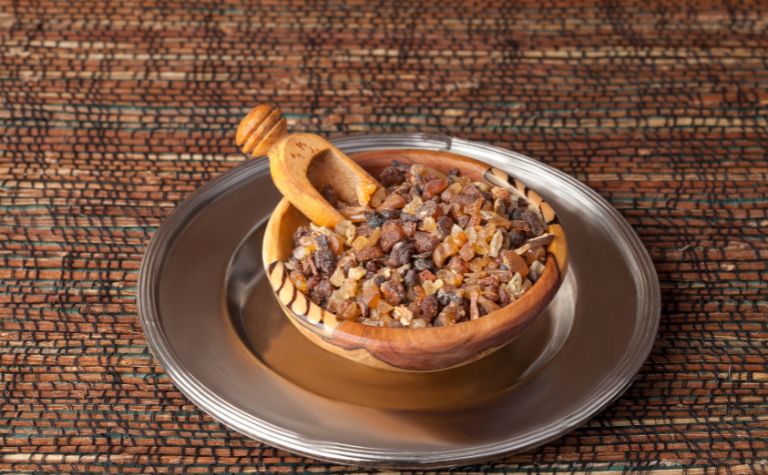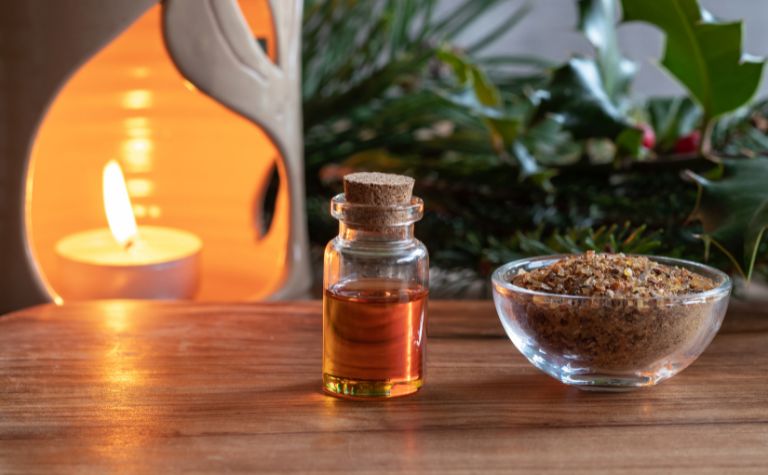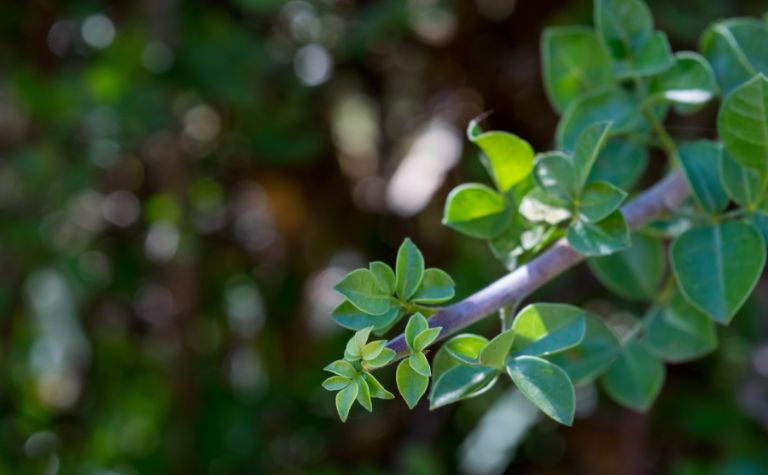Myrrh, a resin obtained from the sap of certain trees, has been a sought-after commodity for thousands of years.
Its use stretches across continents and civilizations, playing prominent roles in ancient rituals, medicines, and perfumes.
While many may recognize its name from historical and cultural references, fewer might be familiar with its distinct aroma.
The scent of myrrh is unique and often evokes different reactions from individuals based on its complexity and the memories it might stir.
This article seeks to describe the scent of myrrh, comparing it to other familiar aromas and exploring its modern-day applications in perfumery and aromatherapy.

Primary Aromatic Notes of Myrrh
Myrrh exudes a multifaceted aroma, making it a treasured ingredient in various applications over the centuries.
At its core, myrrh presents a deep, resinous scent.
This warm and balsamic characteristic is often described as woody, somewhat akin to the scent of certain aged woods or the forest floor.
Alongside this, myrrh has a faintly medicinal quality, reminiscent of its use in ancient treatments and remedies.
This medicinal note, however, is not overpowering; it melds seamlessly with the resin’s natural sweetness.
Yet, despite its inherent sweetness, myrrh carries a slightly bitter undertone, grounding its fragrance and adding depth.
Together, these primary notes create a rich and earthy aroma, making myrrh a distinctive and memorable scent.

Subtleties and Variances in Myrrh’s Fragrance
Like many natural substances, the scent of myrrh isn’t uniform; it can display subtle differences based on several factors.
For one, the region where the myrrh tree grows can influence its scent profile.
Soil type, climate, and local flora can imbue the resin with unique undertones.
For instance, myrrh sourced from some regions might have a slightly more citrusy nuance, while others lean more towards the smoky side.
The age of the resin can also play a role in its aromatic nuances.
As myrrh ages, some lighter, volatile notes may evaporate, leaving a deeper, more intensified aroma behind.
This aged myrrh might be perceived as having a richer, almost velvety quality compared to fresher samples.
Processing methods can introduce another layer of variance.
When myrrh is distilled or processed for oils, the heat and method used can emphasize certain scent notes over others.
Thus, myrrh essential oil might present a slightly different fragrance profile compared to raw resin tears.
Lastly, individual perception plays a part in how one interprets the scent.
Some might detect hints of licorice or root beer, while others perceive notes of hay or dry earth.
Such individual interpretations add to the complexity and allure of myrrh’s intriguing aroma.

Comparison to Other Resins and Aromatics
Myrrh holds a distinctive place in the world of resins and aromatics, yet when discussing its scent, it’s helpful to draw comparisons to familiar fragrances to provide a frame of reference.
One of the most commonly associated resins with myrrh is frankincense.
While both have been historically significant and often mentioned together, their scents are distinct.
Frankincense tends to have a lighter, lemony, and pine-like aroma, while myrrh leans towards the earthy, smoky, and slightly sweet spectrum.
Another resin, copal, is sometimes compared to myrrh.
Originating from Central and South America, copal has a fresh, crisp scent with hints of citrus, making it brighter in comparison to the deeper notes of myrrh.
Benzoin, a resin frequently used in perfumery, has a warm, vanilla-like aroma.
While it shares the sweet aspect with myrrh, it lacks the characteristic smoky and earthy tones.
Labdanum, derived from rockrose shrubs, offers a rich, balsamic, and amber-like scent.
It resonates with some of myrrh’s warmer, resinous facets but is generally sweeter and lacks the herbal undertones.
In essence, while myrrh shares some aromatic qualities with other resins, its unique blend of earthy, smoky, and slightly sweet notes sets it apart, making it a cherished ingredient in both historical and modern contexts.
Factors Influencing the Aroma of Myrrh
The aroma of myrrh can vary based on several factors, each playing a role in the nuances of its scent profile.
One primary determinant is the origin or source of the myrrh.
Different regions produce myrrh with slight variations in aroma, influenced by the local soil composition, climate, and specific species of the Commiphora tree from which it is harvested.
The age of the myrrh resin also impacts its fragrance.
Over time, as the resin ages, some of its volatile compounds may evaporate or undergo subtle changes, leading to a mellowing or modification of its original scent.
The method of extraction plays a role as well.
Myrrh can be used in its raw resin form, as an essential oil, or as an infusion.
Each form might emphasize different aspects of its aroma.
For instance, steam-distilled myrrh essential oil might have a slightly different profile compared to a solvent-extracted absolute.
Processing and storage conditions are further factors to consider.
Exposing the resin to high temperatures or storing it in fluctuating conditions can alter its aromatic compounds.
Proper storage in a cool, dry place helps in preserving the integrity of its fragrance.
Lastly, the manner in which myrrh is used can influence the perception of its aroma.
When burned, myrrh releases smoky, rich notes, while in perfumery, its subtler tones might be emphasized when blended with other ingredients.
These variations highlight the complexity and versatility of myrrh’s captivating scent.
Myrrh in Modern Perfumery and Aromatherapy
Myrrh, with its rich and captivating scent profile, holds a prominent position in the world of modern perfumery and aromatherapy.
Its multifaceted aroma, which carries warm, smoky, and slightly sweet undertones, makes it a favorite among perfumers.
In perfumery, myrrh serves as an excellent base note, providing depth and longevity to fragrances.
It is often blended with other resins, woods, and spices to create oriental and woody scents, giving perfumes a touch of ancient allure and sophistication.
Beyond its role in fragrances, myrrh is also valued in aromatherapy for its calming and grounding properties.
When diffused or applied topically in diluted form, the scent of myrrh can promote relaxation, reduce feelings of stress, and enhance meditation practices.
Its deep, resinous aroma is believed to encourage introspection and emotional balance.
Moreover, the use of myrrh in skincare products has seen a resurgence.
Known for its soothing and anti-inflammatory properties, myrrh essential oil is often incorporated into creams, balms, and serums aimed at nourishing the skin and addressing concerns like dryness and irritation.
The enduring appeal of myrrh in both perfumery and aromatherapy underlines its timeless charm and versatility.
Whether used as a fragrant cornerstone in a luxurious perfume or as a therapeutic agent in holistic practices, myrrh continues to enchant and benefit individuals worldwide.
Related Questions
Joseph, the husband of Mary and the earthly father of Jesus Christ, is depicted in the Gospels as humble, law-abiding, and obedient. In many Christmas scenes, such as in displays of the manger, he is...
The virgin Mary, the mother of Jesus, is one of the most fascinating people in the Bible. For 2,000 years, people of different eras and cultures have marveled at her faith in God. Mary's story in the...
